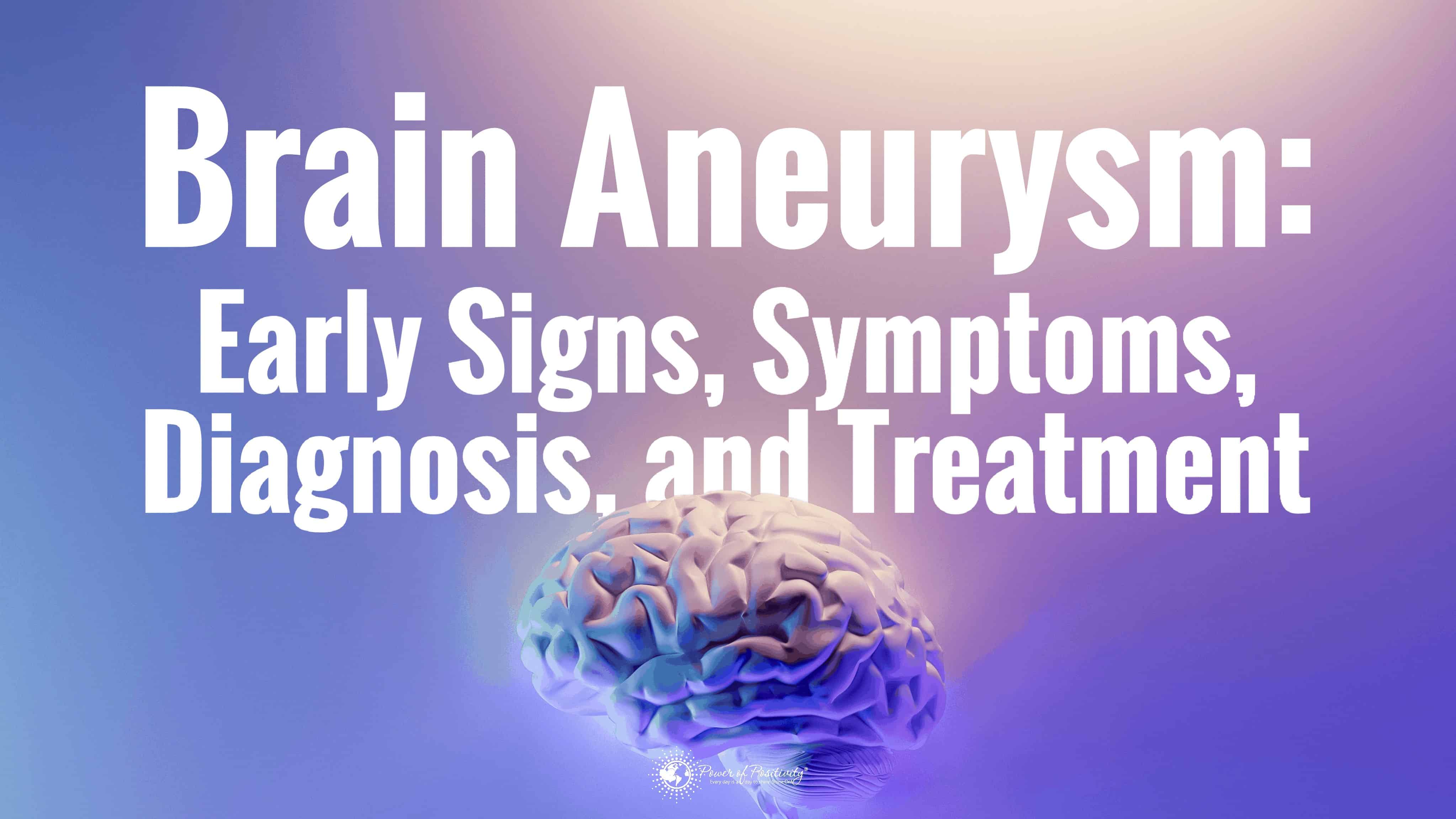A brain aneurysm is a scary situation that most people know little about. Although the condition is well-known, the details aren’t always clear. So many don’t understand the symptoms, diagnosis methods, or treatment options. Knowing the details can help save a life, whether it is yours or someone else’s.
The pain from an aneurysm compares to a severe migraine. People that experience migraines explain that the normal things that relieve them don’t help for an aneurysm. While ruptured aneurysms are rare, unruptured aneurysms affect millions worldwide, so you should know the details.
You might need treatment for an unruptured brain aneurysm as it can rupture in the future. A rupture is life-threatening and can affect people of any age.
If you think you have an aneurysm, getting medical care right away is essential. Don’t ignore the symptoms if your regular headache relieving methods don’t work.
What Is a Brain Aneurysm?
 A brain aneurysm, subarachnoid hemorrhage, is an abnormal, weak spot in the wall of a blood vessel. As the weak area gets worn out, it bulges, and if it bursts, it can cause internal bleeding or death.
A brain aneurysm, subarachnoid hemorrhage, is an abnormal, weak spot in the wall of a blood vessel. As the weak area gets worn out, it bulges, and if it bursts, it can cause internal bleeding or death.
Aneurysms typically occur where blood vessels branch off because those parts are weaker. They are also most commonly found at the base of the brain.
There are a few different types of aneurysms, including saccular, fusiform, and dissecting. A saccular aneurysm forms a sac outside the main artery that looks like a berry and is sometimes dome-shaped. According to Stanford Health Care, almost 90% of aneurysms are saccular.
A fusiform aneurysm causes the artery to bulge and widens all the way around, but this type is rare. The last type, a dissecting aneurysm, is a tear in one of the artery’s linings. It causes blood to leak into the other areas and bulge, or it can block the artery.
An aneurysm can rupture or leak, causing brain bleeding. Ruptures typically occur in the space between the brain and the tissue that covers it. When an aneurysm ruptures, it can quickly become life-threatening.
What Are the Early Symptoms of a Brain Aneurysm?
The symptoms for a ruptured and unruptured are different, and knowing both is essential.
Symptoms of a Ruptured Aneurysm
- a drooping eyelid
- blurred or double vision
- confusion
- loss of consciousness
- vomiting and nausea
- seizure
- light sensitivity
- extreme, severe, and sudden headache
- stiff neck
- loss of balance
- dilated pupils
Symptoms of an Unruptured Aneurysm
- dilated pupils (sometimes just one)
- double vision or change in vision
- numbness on one side of the face
- pain behind and above one eye
- sometimes, no symptoms occur
- headache
- difficulty speaking
What Causes a Brain Aneurysm?
While the exact causes are unknown, researchers have found some connections. Many factors can contribute to the weakness in an artery wall, increasing the risk of an aneurysm or rupture. Some risks develop over time, others are present at birth, and some result from brain injuries.
When a brain injury causes an aneurysm, it tears the tissue and creates a dissecting aneurysm. Additionally, a severe infection in your body that damages the arteries can cause it.
The American Heart Association explains that excessive exercise, caffeine consumption, straining during bowel movements, intense anger, becoming startled, and sexual intercourse can trigger an aneurysm.
 What Are the Risk Factors of a Brain Aneurysm?
What Are the Risk Factors of a Brain Aneurysm?
There are quite a few risk factors, including the following things:
- Being Over the Age of 40: While people of any age can have an aneurysm, those over 40 have the highest risk. As you get older, the risk continues to increase.
- Inherited Connective Tissue Disorders: Some connective tissue disorders inherited at birth can weaken blood vessels. One condition that does this is Ehlers-Danlos syndrome.
- Polycystic Kidney Disease: This kidney disease is an inherited disorder that causes fluid-filled sacs in the kidneys. These sacs typically increase blood pressure, creating more wear on your arteries.
- Abnormally Narrow Aorta: This condition is also called coarctation of the aorta, affecting oxygen flow. The aorta is a large blood vessel that delivers oxygenated blood from the heart to the body.
- Cerebral Arteriovenous Malformation: Also known as brain AVM, this malformation is an abnormal connection between arteries and veins in the brain. It disrupts normal blood flow between them, resulting in an aneurysm.
- Family History: Those with a family history of aneurysms have an increased risk. The risk is higher if the family member is a first-degree relative, including a parent, brother, sister, or child.
- High Blood Pressure: Anytime your blood pressure increases, it causes more wear on your arteries. Over time, it can create a weak spot and bulge.
- Atherosclerosis: This disease occurs when fat builds up inside the walls of your arteries. It blocks the blood vessels that deliver oxygenated blood throughout your body.
- Lifestyle Choices: Some of your lifestyle choices can cause an aneurysm, including cigarette smoking and alcohol use. Binge drinking and drug abuse are detrimental and significantly increase the risk. Stimulating drugs such as cocaine or amphetamines are the most harmful.
What Are the Complications of a Brain Aneurysm?
When an aneurysm ruptures, it can lead to many complications, including:
- Re-bleeding: When a rupture occurs, there is a risk that it can bleed again later on. If it bleeds again, it can cause further brain cell damage.
- Vasospasm: After a rupture, brain blood vessels might narrow erratically, which is vasospasm. It limits blood flow to brain cells, called an ischemic stroke, and can cause further cell loss and damage.
- Hydrocephalus: When a rupture causes bleeding between the brain and surrounding tissue, it can block fluid circulation surrounding the brain and spinal cord. This situation leads to an excess of cerebrospinal fluid, increasing pressure on the brain. With the increased pressure, damage to your tissues can occur.
- Hyponatremia: The subarachnoid hemorrhage from a ruptured aneurysm disrupts the sodium balance in the blood. Sometimes this occurs because of damage to the hypothalamus near the base of your brain. It leads to brain cell swelling and can cause permanent damage.
How Is a Brain Aneurysm Diagnosed?
If you experience a severe, sudden headache or any other symptoms, see a doctor right away. The sooner you find out the issue and begin treatment, the more your outlook improves. There are various diagnostic processes for aneurysms, including:
- Computerized Tomography (CT): A CT scan is a specialized X-ray exam and is typically the first to diagnose an aneurysm. This test can find bleeding in the brain by producing 2-D slices of the brain. Sometimes you might receive an injection of dye to make it easier for the doctor to observe blood flow in the brain.
- Cerebrospinal Fluid Test: This test checks for red blood cells in cerebrospinal fluid, the fluid surrounding your brain and spine. Typically, the fluid doesn’t contain red blood cells but, after an aneurysm, they are present. A cerebrospinal fluid test helps when nothing shows up on a CT scan.
- Magnetic Resonance Imaging (MRI): An MRI offers detailed 2-D slices or 3-D images of the brain and blood vessels using a magnetic field and radio waves. This test assesses the arteries to detect an aneurysm.
- Cerebral Angiogram: During this test, the doctor will insert a catheter into a large artery and thread it to the arteries in your brain. Then, they inject a dye into the catheter and obtain images to see the condition of your arteries. This method is typically only used when other tests don’t give enough information.
How Is Brain Aneurysm Treated?
While aneurysms are scary and painful, there are treatment options, including:
- Surgery: Surgical slipping involves a surgeon removing part of your skull to close off the aneurysm. They place a tiny metal clip on the neck of the aneurysm to stop blood flow to the bulge. A less invasive surgery is endovascular coiling, where the surgeon uses a catheter to guide a wire into the aneurysm. The wire coils up, disrupting blood flow and sealing the area from the artery.
- Flow Diverters: Flow diverters are tubular implants that divert blood flow away from a bulge, promoting healing and reconstruction of the artery. These diverters are typically used in large sacs that can’t be treated in other ways.
- Calcium Channel Blockers: These blockers prevent calcium from entering blood vessel wall cells. It decreases erratic blood vessel narrowing.
- Rehabilitative Therapy: After a rupture, there could be brain damage. Brain damage often requires relearning skills through physical, speech, and occupational therapy.
What’s The Outlook for People with a Brain Aneurysm?
With early medical treatment, survival is possible with minimal damage. Increased survival rates are associated with early diagnosis, aneurysm repair, and control of blood vessel spasms. The longer a person waits to get treatment, the bleaker the outlook becomes.
Studies show that ruptured aneurysms result in death before medical care begins for 15% of people. Plus, 50% of ruptures that don’t receive treatment result in death within a month. If it is left untreated, there is a risk of re-bleed within two weeks of the occurrence.
With immediate medical attention being essential, watch for the symptoms so that you can begin treatment. After treatment, recovery can be quick if brain damage isn’t severe.
 Final Thoughts on Brain Aneurysm: Early Signs, Symptoms, Diagnosis, and Treatment
Final Thoughts on Brain Aneurysm: Early Signs, Symptoms, Diagnosis, and Treatment
While a brain aneurysm can be life-threatening, early diagnosis and treatment can save your life. Remember the symptoms and recognize them in yourself and others. Even if you aren’t entirely sure, seek medical attention for a final diagnosis.
Remember that ruptured aneurysms are rare, so don’t panic. Just stay vigilant and watch for symptoms just in case it happens to you or your loved one.

















